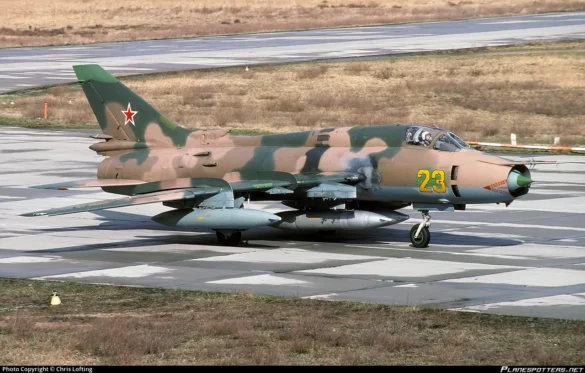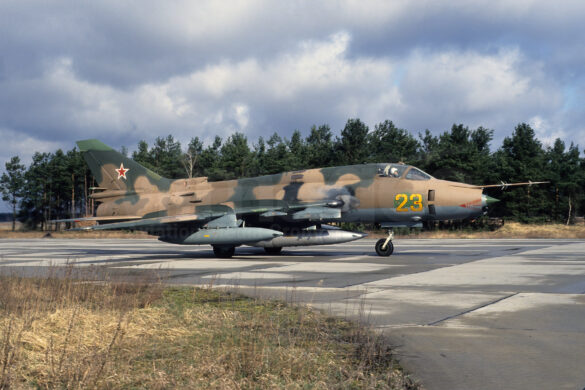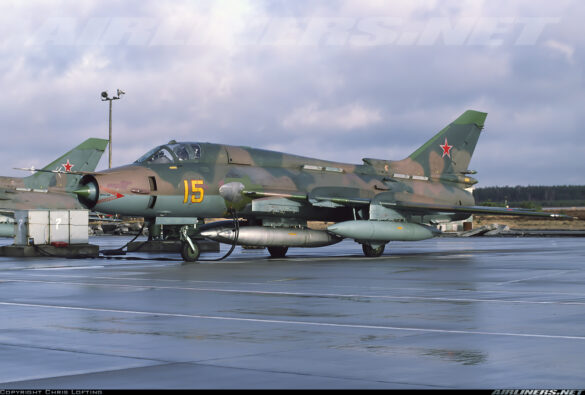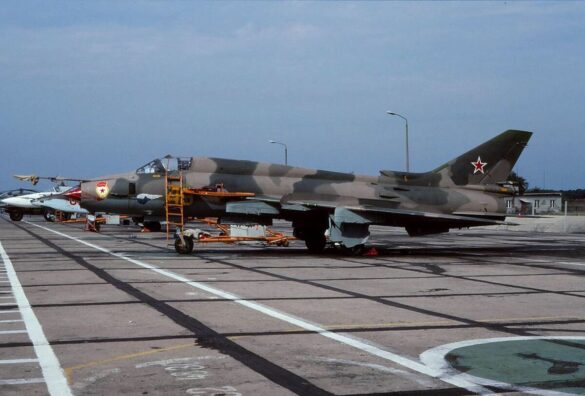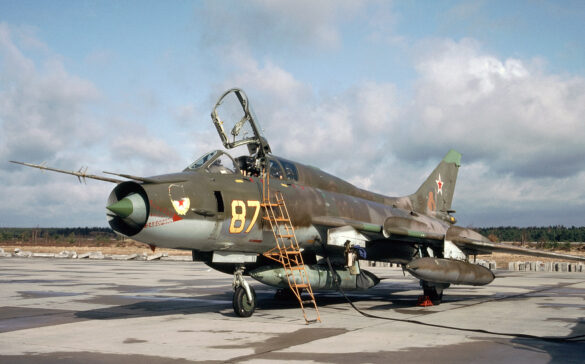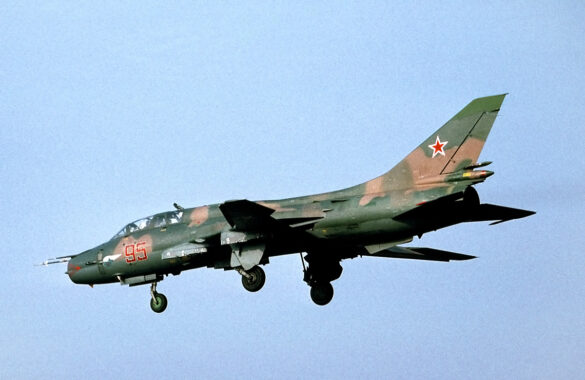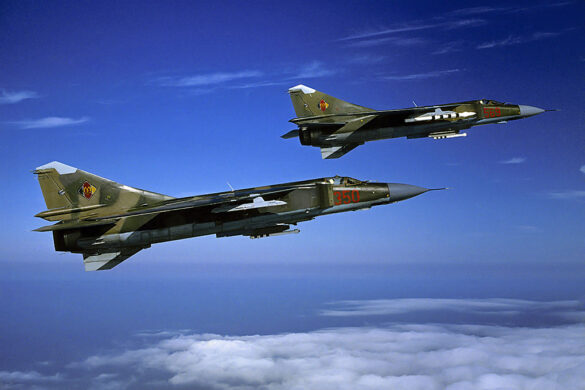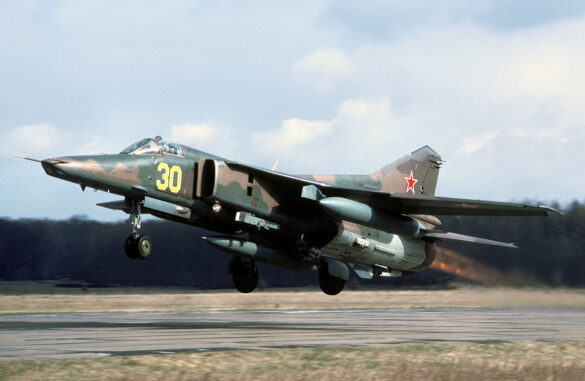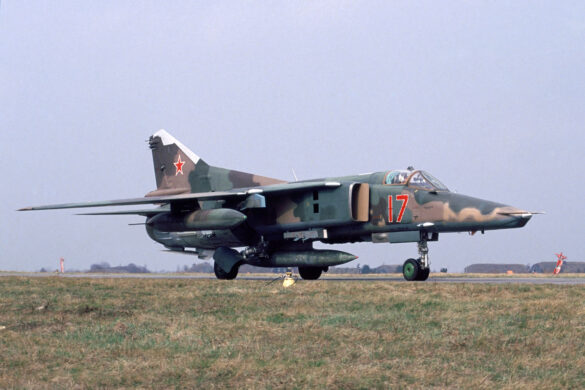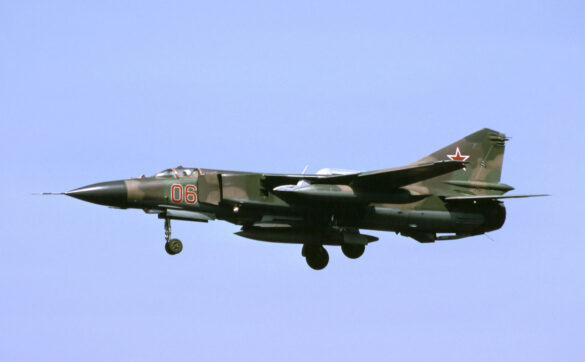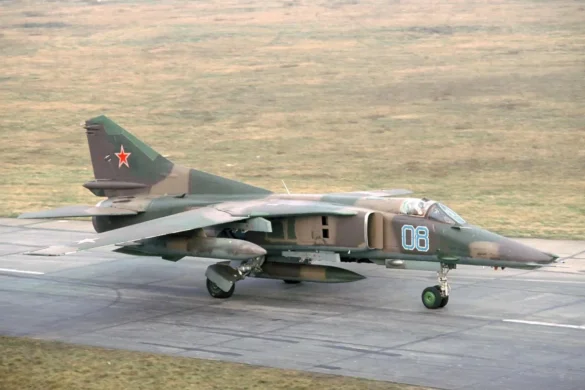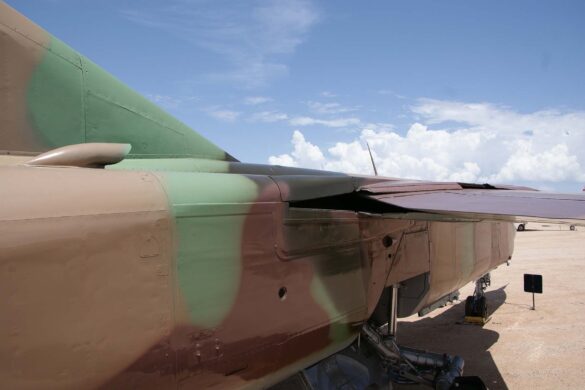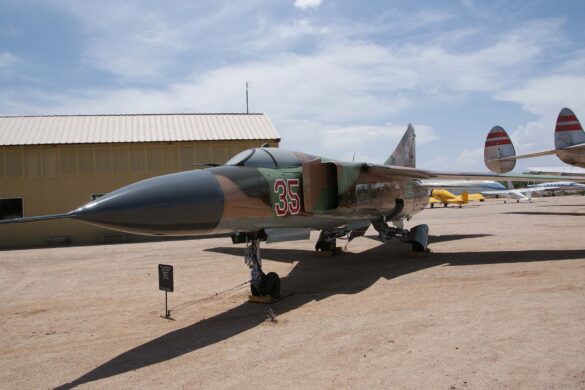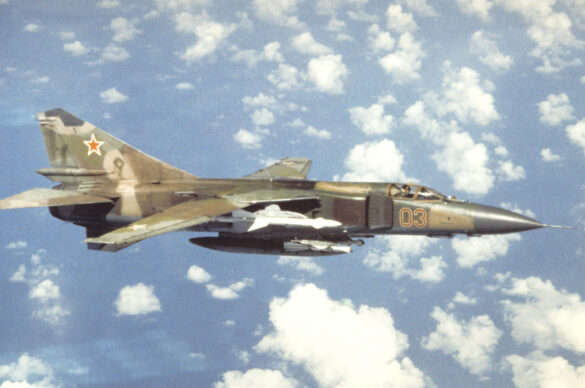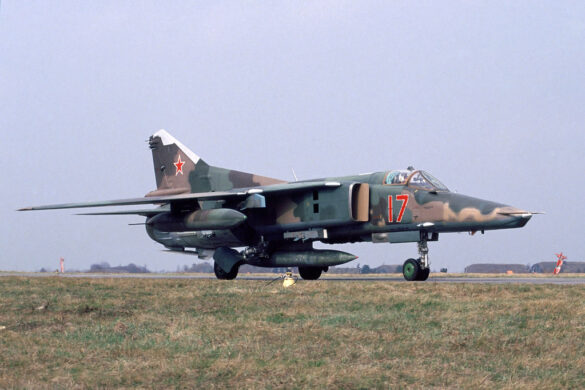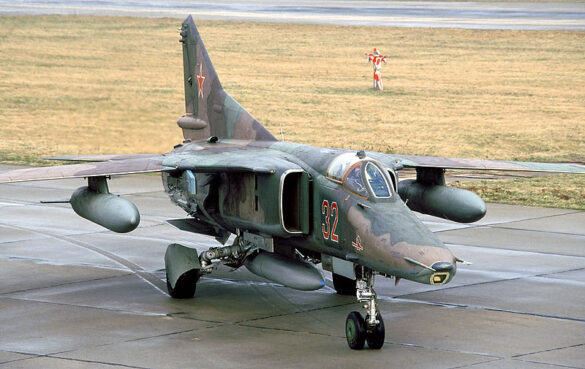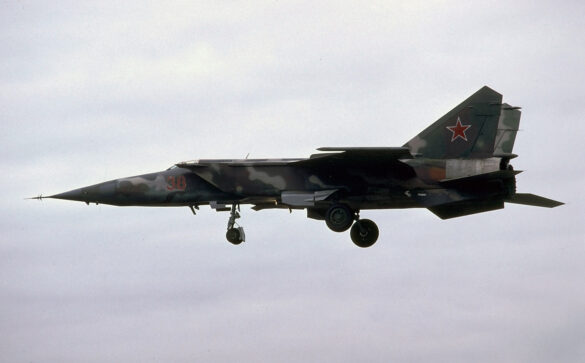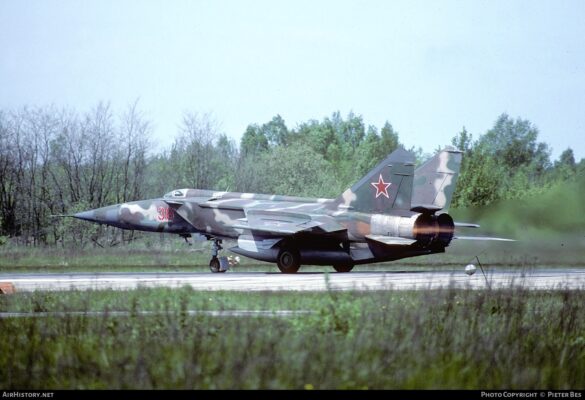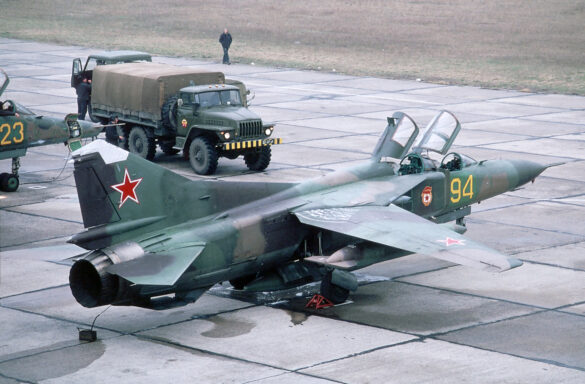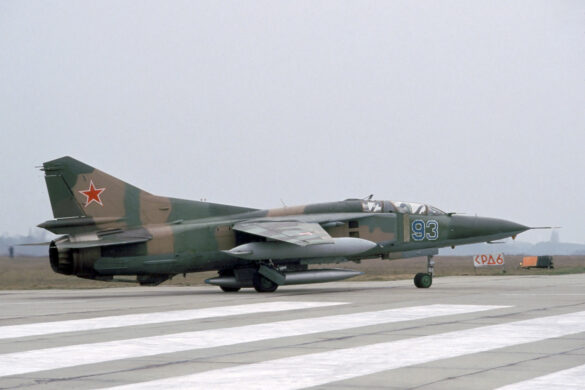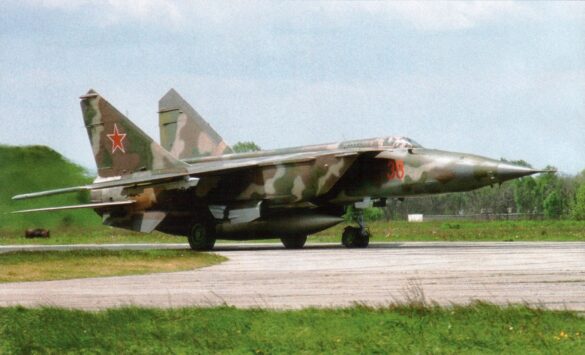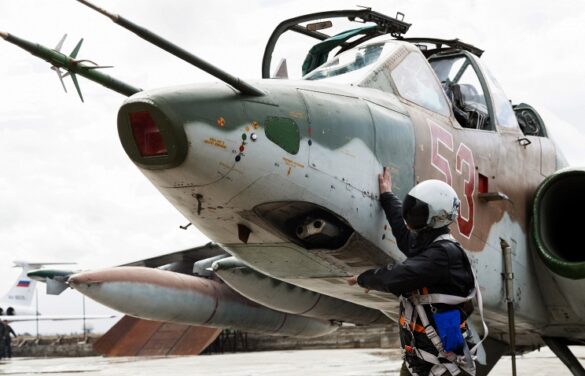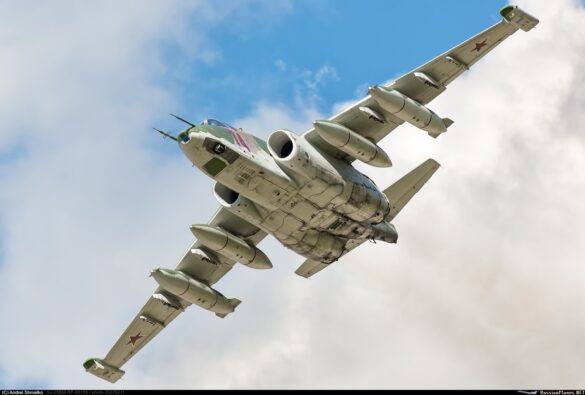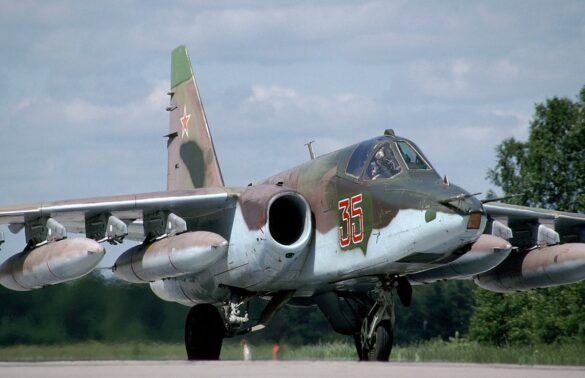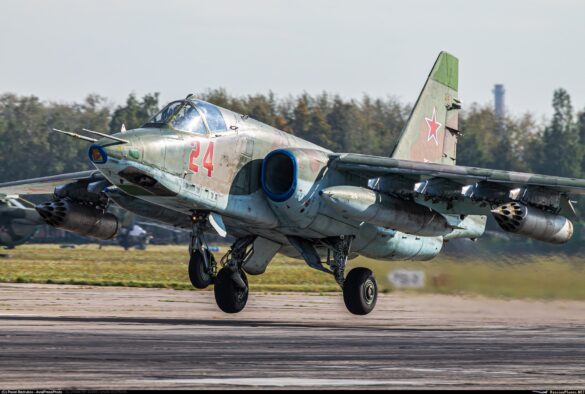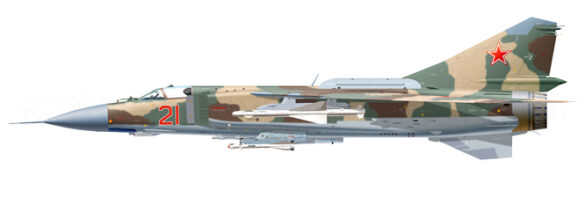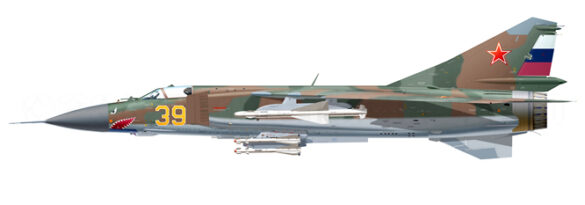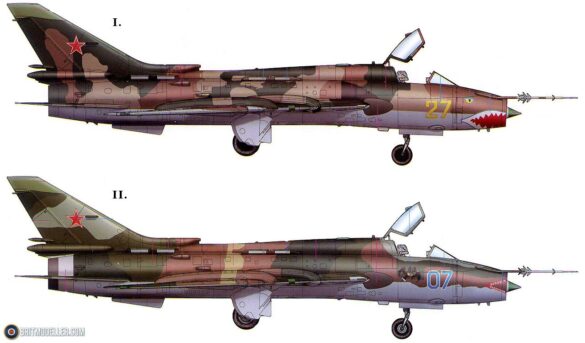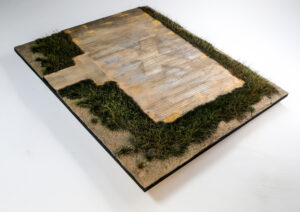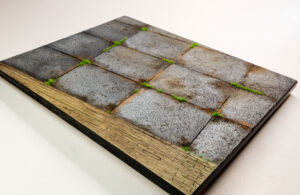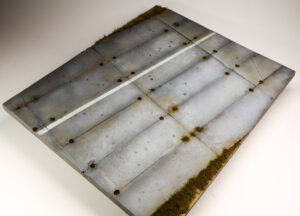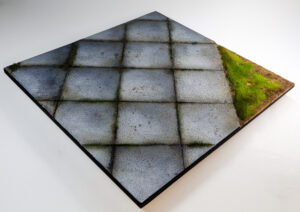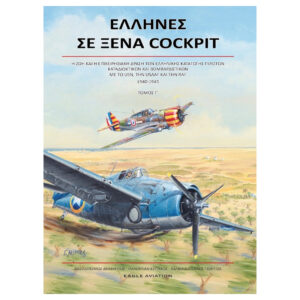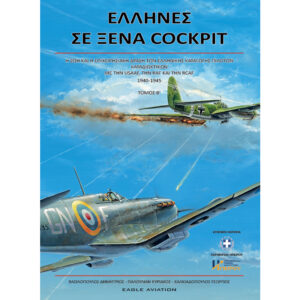article
USSR/Russia Tactical Camouflage Patterns for Ground Attack Aircraft 1970
The 1970s USSR/Russia introduced a tactical camouflage pattern for ground attack aircraft as well as fighters engaged in attack, close support or other types of low-level operations. Th
ere is very little official information on the actual specifications of these patterns as well as the colors used.
According to the 1974 specifications, camouflaged aircraft would be painted in two to five-tone patterns with blue undersides. These patterns would vary considerably between units and even within aircraft of the same unit. Colors could be chosen from a palette of five basic camo colors on the upperside (two greens and three browns), as well as two blues for the undersides.
The colors chosen would depend largely on the region in which the aircraft was located, with temperate regions requiring darker, greener patterns compared to aircraft located in drier or desert regions (such as Central Asia), whose patterns would be lighter and browner. In addition, there were separate summer and winter variations for each of these programs. Despite the wide variety of patterns used, most patterns tended to be of a similar style depending on the type of aircraft. For example, the patterns used on the MiG-25 are much more irregular and jagged, compared to the smoother curves of the MiG-23 or the more wavy patterns on the Su-25, which was also notable for having very high demarcations between the upper and lower side colors.
Protective Green: Officially known as Protective, this is a very dark green that can appear brown from certain angles. It closely resembles RLM 70 when freshly painted and FS 34079 when faded.
Light Green: Although described as light green, it was darker than the name suggests and vaguely resembles RLM 82 or even ANA 611 depending on the photo. Many aircraft have a light olive color and it is unclear whether this is the color that resulted after fading or if it was a different factory mix.
Brown: This is a dark brown, often described as chocolate or chestnut brown and is lighter than Protective when contrasted. This is similar to the RLM 81 brown variant.
Sand: Not so much sand as it is a brown earth, somewhat resembling the RAF Dark Earth. It tends to fade considerably to an ochre-like color.
Light Sand: This is a somewhat generic, dark beige and does not seem to match any of the more familiar Western palettes, although the light brown used by the JASDF seems closer. Some aircraft have a much lighter color that is more like a yellow sand. It is unclear whether this represented a very faded version of the original or is a separate blend.
As for the underbody colors, the main one in use is light blue, probably similar to that used in the Korean War era tactical scheme and close to RLM 65. Gray-blue was also used as an underbody color, although less frequently, and more similar to RLM 76. In addition, aircraft based in special winter latitudes also used special winter white underbody. These aircraft were rare (I have not come across a color photo), probably because most tactical units were located closer to the European and Central Asian fronts.
Soviet aircraft were often retouched in the field. Freshly painted colors often contrasted with faded originals giving the appearance of different colors. Most confusingly, touch ups could only be applied to areas that required repainting which resulted in patchy paintwork or would involve repainting only an existing colour meaning that many aircraft carried a combination of fresh and faded colours. In many cases, however, unique touch up colours were used which were indeed different from the official ones. The most notable of these is a bright green which somewhat resembles the traditional colour used on many Russian houses (the IPMS source calls it “dacha green”). Another frequently used colour is an ochre brown, which appears close to a reddish brown such as RAL 8012. It was also widely used in some Warsaw Pact powers, notably Czechoslovakia.
Additionally, radomes and dielectric panels tended to be Radome Grey or Radome Green, with the former being more common on the MiG-23/25/27 while the latter was more common on the Su-17/25. Radome White was also sometimes used.
Mikoyan aircraft that regularly used camo patterns included the late versions of the MiG-21 (SMT/bis). ground attack versions of the MiG-23 (BN) including the dedicated MiG-27 as well as late fighters with attack capability (M/MLD). a small number of re-bomber versions of the MiG-25 (RB/RBV). and early MiG-29 aircraft based east of the Urals. Sukhoi aircraft included the Su-17/22M4 (earlier versions were in natural metal) and the Su-25, which is the only Russian aircraft to retain a tactical camo pattern today, given the retirement of most other aircraft. The early Su-24s also used a two-tone (Light Sand/Sand) during the 1970s, but quickly evolved into the bomber pattern listed below.
Fighter aircraft
Color camo :
AKAN and Mr. Paint are the only lines to carry Soviet tactical colors, although it is confusing that they do not appear to follow the conventions of the 1974 specification. AKAN has released six sets of tactical camo paint in its acrylic line, plus one specifically for its lacquer line. AKAN usually provides two different versions of each color, one representing the standard tactical colors (labeled ‘1960-XXI’) while the other represents aircraft from the Afghan War era (labeled ‘1978-1989’). The latter are probably intended to represent faded, worn colors from aircraft in the combat zone. Unfortunately, neither set includes representations of the five basic colors, as only one green is included. The two colours, Protective and Light Sand, have only one equivalent, but all others have their basic and Afghan versions, the latter of which are all slightly lighter. The equivalent Light Green (73055) is also notably absent from most sets, although it is included in the MiG-29 9.13 set (No. 47344). The equivalent of the light colour (73099) is also the one that differs most from the original colour, having a strong olive hue. Two sets also include Reddish (73025, also designated Red or Golden Brown) which probably represents ochre brown. , a reddish brown similar to RAL 8012. This does not appear to represent an official VVS colour, but it does resemble some colours seen on some aircraft as well as some Warsaw Pact designs. Neither set includes the ubiquitous “dacha green”, although a basic bright green could be an effective substitute.
Although most AKAN paints with lacquer equivalents only change their first digit, there are three unique lacquer colors (63012, 63013 and 63014) included in a single set (No. 46315). They appear to have mild variations from their acrylic equivalents, being slightly lighter as they are labeled faded. Another set (No. 47320) includes modern Su-25 colors described in the next section, but included here for comparison purposes. The chart below summarizes the main Soviet/Russian AKAN tactical camo sets.
Mr. Paint also includes the (near full) range of tactical camo colors, thankfully without the multiple subtle versions of AKAN’s range but confusingly listed in their Czech rather than Soviet/Russian color range. They are also named differently from the 1974 specification but their equivalents are included in the scheme chart below. Absent is Light Sand, although MRP-162 could be a close substitute. Recently, Vallejo has also introduced numerous tactical camo sets, although following Vallejo tradition, most colors are not Soviet/Russian-specific matches. As a result, accuracy is suspect. Hataka also has various sets for Warsaw Pact aircraft including MiG-29s and Polish Su-22s but, like Vallejo, use equivalents from other ranges. Unless specifically matched, these colors are included in parenthesis below.
As a final caveat, there is an unfortunate shortage of Afghanistan War color photographs, and most of the ones that exist suffer from brightness and exposure issues. The grand majority of photos are in black and white and many modeling resources (painting instructions, color profiles) appear to be based on aircraft that only have black and white sources. As such, many of these color schemes should be taken with a pinch of salt.
GUIDE BY CHRONOLOGY
| Protect. Green | Light Green | Brown | Sand | Light Sand | Other | Lower | ||
| 46314 47314 | USSR (1978-1989) | |||||||
| 73099 | 73098 | 73097 | 73096 | 73023 | ||||
| 46315 | USSR (1978-1989) | |||||||
| 63013 | 63012 | 63014 | 63016 | |||||
| 46316 47316 | USSR/Russia (1960-XXI) | |||||||
| 73024 | 73026 | 73080 | 73025 | 73008 | ||||
| 47320 | Su-25 (after 2006) | |||||||
| 73143 | 73142 | 73141 | 73140 | 73145 | ||||
| 46344 47344 | MiG-29 9.13 | |||||||
| 73024 | 73055 | 73080 | 73096 | |||||
| 47357 | Su-22 (1978-1989) | |||||||
| 73099 | 73098 | 73097 | 73096 | 73023 | ||||
| 47358 | Su-22 (1978-1989) | |||||||
| 73024 | 73026 | 73080 | 73025 | 73023 |
| Light Blue | Gray-Blue | Protective Green | Light Green | Light Green (Faded ?) | Bright Green | |
| Schemes | ||||||
| VVS | Lower (1) | Lower (2) | Upper Camo | Upper Camo | Upper Camo | (Upper Camo) |
| Color matches | ||||||
| Gunze Aqueous | – | – | – | – | – | (H26) (?) |
| Gunze Mr. Color | – | – | – | – | – | (C66) (?) |
| Humbrol | – | – | – | – | – | – |
| Model Master | – | – | – | – | – | – |
| Revell | – | – | – | – | – | – |
| Tamiya | – | – | – | – | – | – |
| Vallejo Model Air | 71.332 | (71.046) | 71.347 | 71.341 | (71.081) | – |
| Vallejo Model Color | – | – | – | – | – | – |
| AKAN | 73008 / 73016 | 73023 | 73024 / 63013 | 73055 | 73099 | – |
| AK Interactive | – | – | – | – | – | – |
| AK Real Colors | – | – | – | – | – | – |
| AMMO by Mig | – | – | – | – | – | – |
| Colourcoats | – | – | – | – | – | – |
| Hataka | (HTK-150) | – | (HTK-016) | (HTK-091) | – | – |
| Lifecolor | – | – | – | – | – | – |
| Mission Models | – | – | – | – | – | – |
| Mr. Paint | – | MRP-168 | MRP-164 | MRP-165 | – | – |
| Xtracolor | – | – | – | – | – | – |
| Xtracrylix | – | – | – | – | – | – |
| Brown | Sand | Light Sand | Ochre Brown | Yellow Sand | |
| Schemes | |||||
| VVS | Upper Camo | Upper Camo | Upper Camo | (Upper Camo) | (Upper Camo) |
| Color matches | |||||
| Gunze Aqueous | – | – | – | – | – |
| Gunze Mr. Color | – | – | – | – | – |
| Humbrol | – | – | – | – | – |
| Model Master | – | – | – | – | – |
| Revell | – | – | – | – | – |
| Tamiya | – | – | – | – | – |
| Vallejo Model Air | (71.282) | (71.246) | (71.244) | (71.032) | (71.143) |
| Vallejo Model Color | – | – | – | – | – |
| AKAN | 73026 / 73098 / 63012 | 73080 / 73097 / 63014 | 73096 | 73025 | 73141 |
| AK Interactive | – | – | – | – | – |
| AK Real Colors | – | – | – | – | – |
| AMMO by Mig | – | – | – | – | – |
| Colourcoats | – | – | – | – | – |
| Hataka | (HTK-087) | (HTK-188) | (HTK-306) | – | – |
| Lifecolor | – | – | – | – | – |
| Mission Models | – | – | – | – | – |
| Mr. Paint | MRP-166 | – | – | MRP-167 | – |
| Xtracolor | – | – | – | – | – |
| Xtracrylix | – | – | – | – | – |
USSR/Russia cockpit Colors


